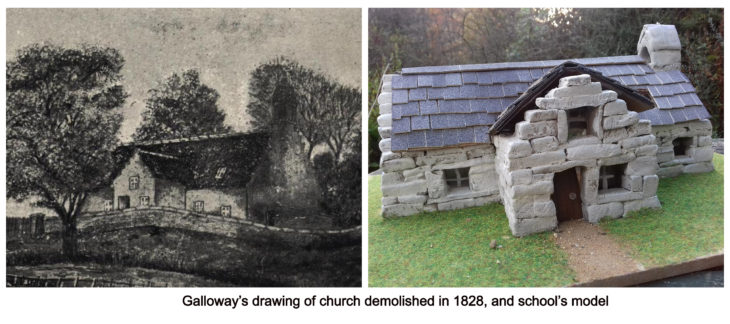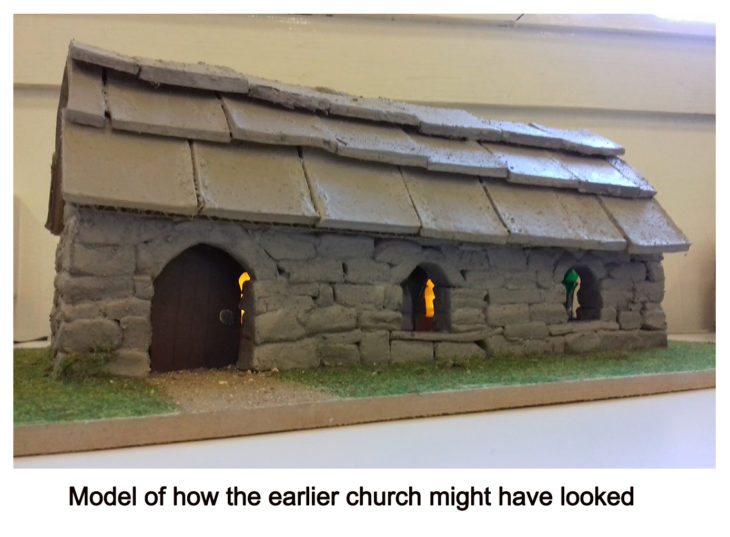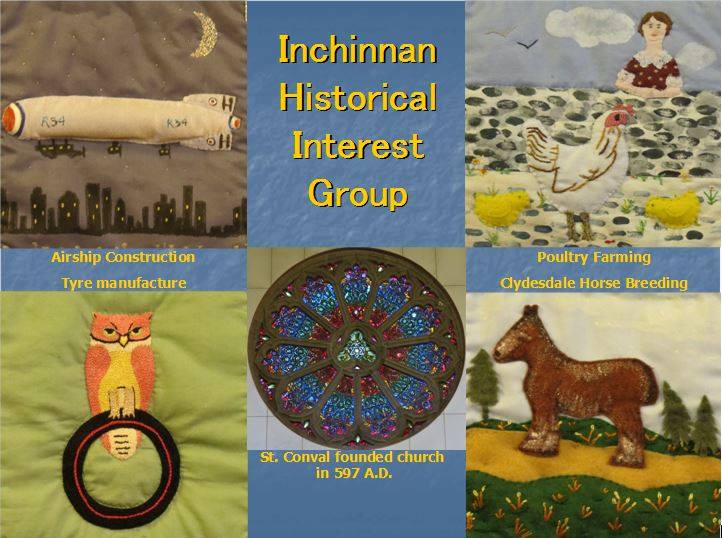Model making schools project – Sue Furness and Inchinnan Primary School
As part of the ‘St. Conval to All Hallows’ project the group invited Sue Furness and children from Inchinnan Primary School to make some models of the early churches at All Hallows. Sue had previously completed a similar activity with Arrochar Primary School for the High Morlaggan project (https://highmorlaggan.co.uk).
Working with the oldest three classes at Inchinnan Primary, Sue got children from each class to make two sets of models – one based on Galloway’s drawing of the church that was knocked down in 1828, and one of what the earlier version of that building might have looked like.
 The only sources available to create the model churches were the drawing and some of the dimensions based on the recent archaelogical excavations. Therefore, imagination was required! The group looked at photos of other churches from similar periods, and sought advice from an expert on medieval churches, Professor Richard Fawcett, to try and fill in the gaps.
The only sources available to create the model churches were the drawing and some of the dimensions based on the recent archaelogical excavations. Therefore, imagination was required! The group looked at photos of other churches from similar periods, and sought advice from an expert on medieval churches, Professor Richard Fawcett, to try and fill in the gaps.
The children were provided with cardboard templates of the buildings. This ensured that the dimensions were right, and that the doors and windows were in the right places. They then shaped ‘stones’ out of air-drying clay and built them up around the templates. Difficulties included making sure that all the bits got put together well enough to stay stuck together when the clay dried. When the buildings were dry, the children coated them with PVA glue to strengthen them. They then painted them using paint mixed with sand to give a rough texture, put in windows made of acetate painted with glass paints, gave them a door, and made roofs for them out of cardboard with imitation ‘slates’. They even hung a bell in the bell tower of the later church! The models were finished off by adding imitation ‘grass’ to the boards, and putting electric tea lights inside to shine through the windows.

The finished products were fantastic, the children not only had fun but had thought a lot about how the old churches had looked and were built, and how they might have changed over the centuries. Some of the children also made clay models of some the Templar stones that are currently placed outside Inchinnan Parish Church.
Sue also made a hands-on model (scale 1:50) of part of the dig itself, she had been along to the excavations which gave her an idea of the layout of the site and the trenches. Lead archaeologist Heather James supplied photos of the trenches at different stages, as well as LiDAR data that could be used to work out the contours of the ground and the relative positions of the trenches. The end result was a model including three of the trenches, where people could lift off the layers to see how the excavation had progressed.


The group were delighted with Sue’s involvement in the project the attention to detail on all the models was fantastic. They are a lasting fond reminder of the 2017 project and we hope to have them on display in the near future.
IHIG would like to thank Sue Furness for providing information and photos for this section of the website, all at Inchinnan Primary School and Cate Gillon for the additional photos.
IMAGE GALLERY
